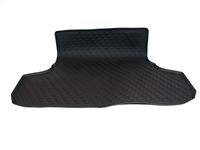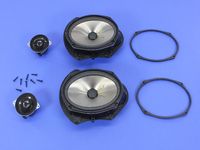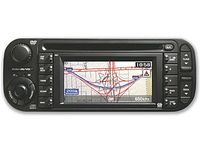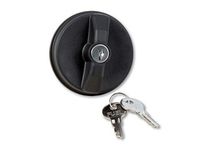
Why choose MoparPartsGiant
- Fast Delivery
Your Chrysler Sebring deserves only Chrysler Sebring genuine parts from MoparPartsGiant.com. There's zero risk involved when buying from us because all our Chrysler Sebring auto parts are expedited directly from authorized dealers and backed by the manufacturer's warranty. For years, we've been the #1 Chrysler Sebring online parts store. Interested in faster shipping? We offer expedited shipping on corresponding orders!
- Dedicated Service
Our outstanding customer service team is here to help you by email, live chat, or phone call with any inquiries regarding your purchase. Dedicated representatives are standing by to assist you with your shopping needs. With a complete Chrysler Sebring parts catalog and a full selection of inventory, your parts are ready to be expedited anywhere in the nation without delays.
- Unbeatable Prices
For any genuine Chrysler Sebring parts you need for standard maintenance or repair, we carry them. With our unbelievably low prices on Chrysler Sebring parts, you won't go anywhere else for Chrysler Sebring parts. We are your one-stop shop for Chrysler Sebring parts without breaking the bank!
Popular Genuine Chrysler Sebring Parts
- Engine Parts View More >
- Electrical Parts View More >
- Fuel Parts View More >
- Body - Sheet Metal Except Doors Parts View More >
- Cooling Parts View More >
- Steering Parts View More >
- Interior Trim Parts View More >
- Brakes Parts View More >
- Transmission Parts View More >
- Suspension & Drive Parts View More >
- Emission Systems Parts View More >
- Doors & Related Parts View More >
Shop Genuine Chrysler Sebring Parts with MoparPartsGiant.com
The Chrysler Sebring, a mid-size vehicle by Chrysler, made its debut in 1995 as a coupe, followed by convertible and sedan versions in 1996 and 2001 respectively. Lauded as one of Chrysler's most enduring models, the Sebring saw production for 16 years, its design continually evolving with advances in technology and changing standards. Initially, the Sebring coupe was powered by either a 2.0L 420A I4 or a 2.5L 6G73 V6 engine. The second-generation coupes boasted an even more potent 3.0L 6G72 V6. With continuous refinements to its classic parts, the Sebring remained competitive in the auto industry. The vehicle's interior trim levels varied across generations and body styles. The first-generation coupe offered base LX and pricier LXi versions, while the convertible variant came in base JX, mid-range JXi, and high-end JXi Limited trims. On the safety front, the base Sebring was equipped with full-length head curtain airbags and side-impact airbags, earning a 5-star frontal safety rating. As the model years progressed, additional features and parts became available, including more powerful engines, 17-inch alloy wheels, automatic climate control, and heated front seats with leather upholstery, making the Sebring a sought-after product in the market.
The Chrysler Sebring, like any vehicle, is subject to wear and tear over time. The most common problems reported by Sebring owners include engine failure and electrical issues. Overheating, evidenced by external coolant leakage below the exhaust manifold, white exhaust smoke, and bubbles in the radiator or coolant overflow tank, often results in engine failure. Regular checks of the cylinder head gasket can help prevent overheating-related engine issues, while the air filter, distributor, and oil cooler should also be monitored to mitigate other engine failures. Electrical issues are also common, with the A/C switch often being the most problematic part. Symptoms of a faulty A/C system include rapid cycling, inability to cool the cabin, and complete failure of the A/C compressor, which often calls for an A/C pressure switch replacement. If the A/C parts keep overheating and some settings work intermittently, it could point to an issue with the A/C control switch. Regular maintenance, such as replacing the windshield wiper or wiper blade, can significantly improve your driving experience. These parts clear the windshield of dirt, raindrops, and other obstructions to ensure clear visibility. In hot climates, they should be replaced annually and biannually in more humid conditions.
Every OEM component is subjected to rigorous quality checks, assuring its safety, resilience, and performance that aligns with your original parts. In need of brand new OEM Chrysler Sebring parts, including Exhaust, Air Conditioners & Heater? Feel free to browse through our extensive catalog of genuine Sebring parts, such as Wiper & Washers And Cylinder & Keys, Differential And Drive Line, all priced at the most competitive rates in the market. Furthermore, every part comes with a manufacturer's warranty and a hassle-free return policy for your convenience.
Chrysler Sebring Parts Questions & Answers
- Q: How to Inspect and Replace a Brake Disc on Chrysler Sebring?A: Loosen wheel lug nuts and raise vehicle on jackstands. Remove wheel and caliper, suspending caliper out of the way. Visually inspect disc for score marks and other damage. Use dial indicator to check disc runout. Check minimum thickness with micrometer. Remove disc and install new one. Install brake pads and caliper, tightening bolts. Install wheel, lower vehicle, and tighten lug nuts. Pump brake pedal to bring pads into contact with disc. Check operation of brakes before driving.
- Q: How to Remove the Vacuum Pump on Chrysler Sebring?A: 2015 and later models are equipped with either a mechanical or electric brake vacuum pump. The mechanical pump is driven by the rear end of the camshaft and mounted on the left end of the cylinder head on 2.4L engines, and the electric pump on 3.6L engines is located at the left side of the engine and secured to a bracket by two mounting bolts. Disconnect the cable from the negative battery terminal. Be careful not to damage the plastic vacuum pump hose connector fitting. Also, oil may leak from the pump so be sure to have plenty of rags ready to soak up spills. Remove the engine cover, then disconnect the quick-connect hose fitting from the pump. Remove the vacuum pump mounting bolts, then carefully separate the pump from the cylinder head. Discard the old O-ring seals. Remove the retaining screw and separate the plastic connector piece from the pump. Check and replace the O-ring on the fitting, if necessary.





























































